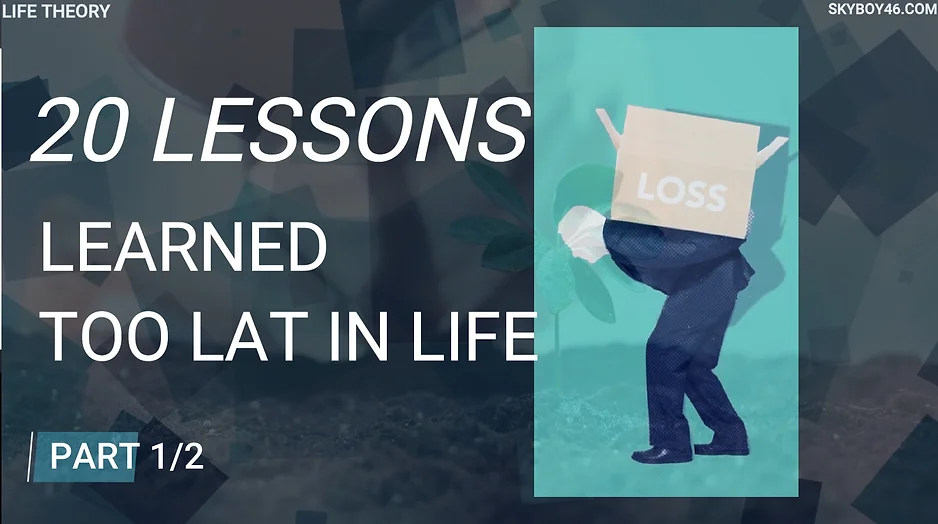Don’t Want To Read?
Watch/Listen To The Full Video on YouTube
Your body wasn’t designed for a life spent sitting, and neither was your brain. Movement doesn’t just keep you fit—it boosts creativity, sharpens memory, and even reverses aging effects on the brain. Whether it’s a walk, a dance, or a workout, your mind thrives when you move. The real question is: How much potential are you leaving untapped by staying still?
SUBSCRIBE: https://www.youtube.com/@LifeTheory46
The Movement Effect Energize Your Mind and Body – Life Stories 296
We all understand the importance of keeping our bodies active, but have you ever wondered just how deep that connection goes? Movement isn’t just about physical health—it has profound effects on our brain as well. In today’s journey, we’re diving into the science behind movement and why it plays such a critical role in how our minds function.
Let’s face it: our modern lifestyle doesn’t do us any favors. We spend hours on end seated at our desks, in cars, or on the couch. Yet, the truth is, our bodies weren’t designed for this kind of sedentary routine. We were built to move, and everything about our biology reflects that. Think about how natural it feels to pace around during a tense phone call. That urge to move is a survival instinct, a way for our bodies to cope with stress and prepare to flee from potential threats.
Interestingly, it’s not just our muscles and joints that benefit from staying active. The brain, our most powerful resource, actually thrives on movement. In fact, it may be the part of us that benefits the most. But why is that? Because when we move, we don’t just activate our muscles—we awaken our cognitive functions too.
Consider children, for example. Have you ever watched a preschooler in action? Their bodies are always in motion, and their brains are developing at a rapid pace. As we age, we tend to move less, but that’s when we need it even more. The hippocampus, a key player in memory and learning, naturally begins to shrink as we reach our 30s, losing around 1% of its size each year. But movement can actually reverse this trend. A study found that people who walked for just 40 minutes, three times a week, saw an increase in the size of their hippocampus after a year. On the other hand, those who focused solely on stretching—a less intense form of activity—saw the usual decline. Essentially, those who moved were not just defying age but reversing it.
The mental benefits of physical activity extend far beyond memory. Creativity can see a 50% boost after a walk, and running has been found to be as effective as antidepressants for combating mild to moderate depression. There’s even data from over a million people showing that cardiovascular fitness is linked to higher IQ levels.
You might now wonder which type of exercise works best. The truth is, any kind of movement is beneficial, but certain activities are better suited for specific goals. For instance, cycling is one of the top exercises for easing mental fatigue, thanks to the sense of escape and rhythm it offers. It’s that feeling of “moving away” from stress that resonates with our primal instincts. But at the end of the day, the most crucial aspect is finding a form of movement you enjoy, so you can make it a habit.
If we take a look at how far we’ve drifted from our roots, the difference is staggering. Our ancestors, who lived as hunter-gatherers, moved an average of 11 to 12 kilometers every day—about 15,000 to 17,000 steps. Today, the average person only gets about 7,000 steps, even with fitness reminders. Though our bodies have remained largely unchanged for thousands of years, our daily activity levels have dropped drastically, and this shift contributes not only to physical health issues but also to mental health struggles.
So, how do we begin to bring more intention to our movement? It starts with some self-reflection. Ask yourself: What kinds of activities do I genuinely enjoy? Do I prefer being active alone, or am I more motivated in a group setting? Do I have any conditions that might limit my options, such as joint issues or diabetes? And what are my goals—am I aiming for weight loss, flexibility, or simply more energy?
Once you’ve identified what works for you, start small. Aim for 20 to 30 minutes of movement three times a week. Don’t overwhelm yourself; make it fun. If you enjoy walking, pair it with a good audiobook or podcast. The key is to schedule your exercise just like any other important appointment. You wouldn’t cancel a meeting with your boss, so don’t cancel on yourself.
Keep things fresh. Experiment with different types of movement. If you walked today, try yoga or kickboxing next time. The goal is to keep it enjoyable because, without some element of fun, the habit won’t stick.
So, what will your movement of choice be? Your body—and your brain—are ready whenever you are.
–> Read More Life Stories Here:
https://www.lifetheory.us
https://www.lifetheory.eu
Buy all of our Life Stories & Our Premium Learning Packs. Listen or Read to them anytime you want. Have them Forever.
You can get each monthly lesson on our website at https://www.skyboy46.com/store
SHARE THIS STORY
Visit Our Store
SHOP NOW
www.skyboy46.com & www.myskypet.com
Designed For Pet Lovers & Introverted Souls
Sport, Hobbies, Motivation, Music & Art






~EXPLORE MORE~
www.linktr.ee/skyboy46


